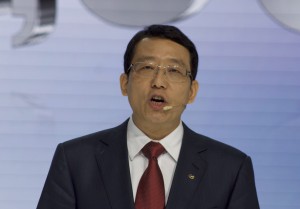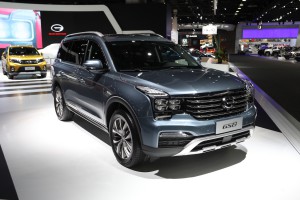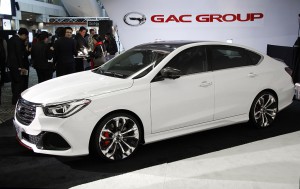China’s Guangzhou Automobile Group in China is taking another step forward in its efforts to become the first Chinese automaker to engage in large scale sales in the U.S. with a new $4.4 million R&D facility in metro Detroit.
During the North American International Auto Show last January, the automaker announced its plans to bring vehicles to the U.S., but acknowledged it needed to make some changes to those vehicles to meet U.S. regulations.
This new research facility in Farmington Hills, Michigan, helps with that process. The company has just begun preparing the building and filling job openings. The new site is expected to create 62 jobs, according to the company.
It is GAC’s second R&D facility in the U.S. It opened its first in Silicon Valley almost two years ago.
(Chinese automakers eyeing international roles. Click Here for the story.)
GAC, which was founded in 1997, is the fifth-largest auto company in China. It produces cars through joint ventures with foreign and American automakers and plans to enter the U.S. market with its GS8, a midsize SUV already for sale in China, in 2019 or 2020.
The move to the U.S. market would cement the company’s efforts to become an international company, although it already sells vehicles in 15 countries round the world.
At last month’s Global Automotive Forum, Li Shao, GAC vice president, said that was one of the company’s objectives when it was first organized back in the 1980s, Li said. But very from the very beginning, GAC’s management understood it had a great deal to learn if it wanted to succeed and it also had to do well in China, Li said.
(Click Here for more about China cutting tariffs on imported vehicles.)
“While internationalization was one of our goals, if you can’t perform well in the Chinese market, how can you expect to grow globally,” he said.
GAC now manages six different brands and the quality of the vehicles built in its assembly plans now matches that of the vehicles built in Honda plants around the world, the company said. The quality of cars built in its plants – more than 3 million in 2017 – has given it the confidence it needs to enter the intensely competitive markets in Western Europe and the United States.
Li Shao also said GAC is intent on overcoming its remaining technical shortcomings, and the new R&D center in Farmington Hills will help with that. One of those is the fact that it doesn’t have an electronic transmission but it is developing one, which should be ready in about a year. It is also working on the development of silicon chips.
(For more about GAC’s plans to be first to sell a Chinese-branded vehicle in the U.S., Click Here.)
After his presentation, Li Shao diplomatically sidestepped questions about tariffs and trade barriers, noting that the issues are now the subject of government to government discussions between the U.S. and the Peoples Republic of China.



